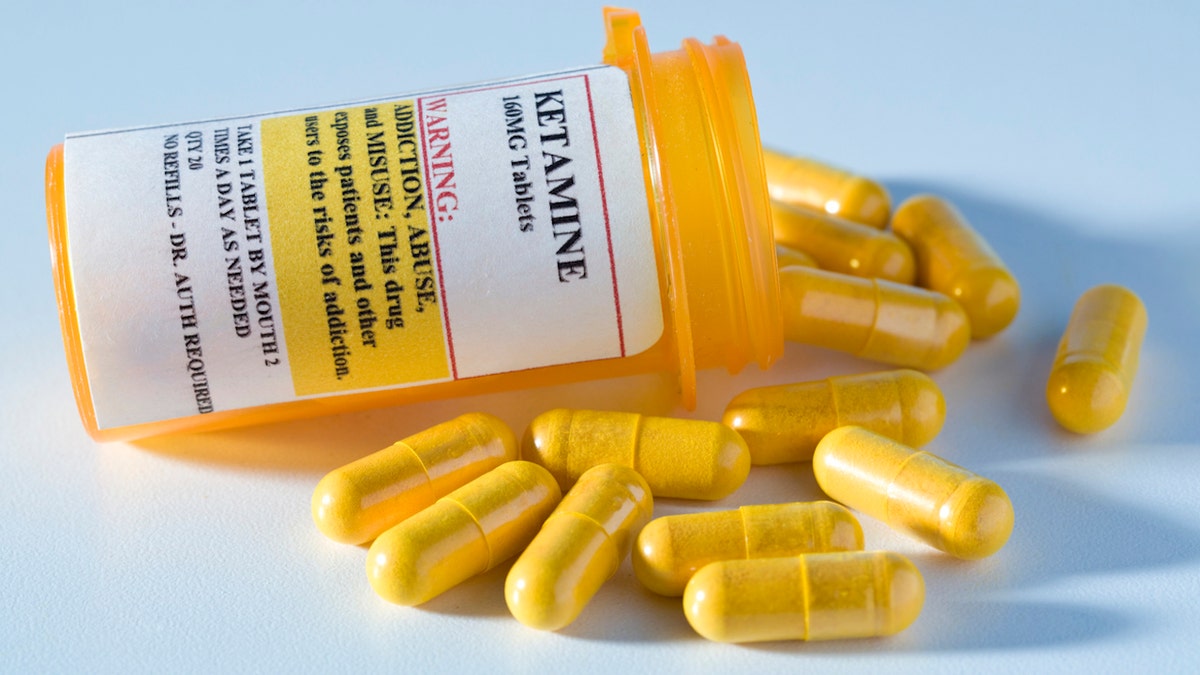Jesse Watters: Why Matthew Perry's death is making such an impact
FOX News host Jesse Watters reflects on the life and legacy of ‘Friends’ actor Matthew Perry on ‘Jesse Watters Primetime.’
Nearly seven weeks after Matthew Perry’s apparent drowning in a hot tub at his California home, the Los Angeles County Department of Medical Examiner released the actor's cause of death as "acute effects of ketamine."
Secondary conditions contributing to the death were listed as "drowning, coronary artery disease and buprenorphine," according to the autopsy report.
"The underlying coronary artery disease made the effects of ketamine on the heart more pronounced," Dr. Marc Siegel, clinical professor of medicine at NYU Langone Medical Center and a Fox News medical contributor, told Fox News Digital.
MATTHEW PERRY CAUSE OF DEATH LISTED AS 'ACUTE EFFECTS OF KETAMINE'
The autopsy report confirmed that Perry had received "ketamine infusion therapy" 1½ weeks prior to his death, reportedly as treatment for depression and anxiety.
"Prescription medications and loose pills" were found at the 54-year-old actor’s residence at the time of his Oct. 28 death, the report also stated.

Nearly seven weeks after Matthew Perry’s apparent drowning in a hot tub at his California home, the Los Angeles County Department of Medical Examiner released the cause of death as "acute effects of ketamine." (Mike Pont/WireImage/Getty Images)
What is ketamine?
Intended for use as an anesthetic to be handled by medical doctors and veterinarians, ketamine is also used illegally as a recreational drug.
The Alcohol and Drug Foundation (ADF) describes ketamine as a "dissociative drug," which means it causes people to feel "separated or detached" from their bodies or physical surroundings.
PRINCE HARRY SAYS PSYCHEDELIC DRUGS HELPED HIM — BUT WHAT ABOUT THE RISKS AND DANGERS?
For some, it can cause hallucinations and alter people’s thoughts and emotions, according to the ADF.
"Ketamine is in the PCP (phencyclidine) family," Siegel told Fox News Digital.
(PCP is a dissociative, mind-altering drug that may lead to hallucinations.)
The off-label use of ketamine has "skyrocketed" in recent years, "despite limited data supporting the safety and efficacy of that practice," according to a report from Yale School of Medicine.

Intended for use as an anesthetic handled by medical doctors and veterinarians, ketamine is also used illegally as a recreational drug. (iStock)
The drug is usually sold as a colorless, odorless liquid or as a white or off-white powder, according to the National Drug Intelligence Center (NDIC) website.
When used in a powder or liquid form, it is often mixed with beverages or smoked with marijuana or tobacco.
MARIJUANA USE AMONG PREGNANT WOMEN IS LINKED TO LOW BIRTH WEIGHT, STUDY FINDS
The powder form can also be snorted or pressed into tablets.
As a liquid, ketamine can be injected, the NDIC states.
Ketamine for depression
In 2019, the U.S. Food and Drug Administration (FDA) approved ketamine in a nasal spray format (Spravato, or S-ketamine) for treatment-resistant depression and suicial ideation.
It is intended to be used in combination with antidepressant pills only under the supervision of a medical professional.

The autopsy report confirmed that Perry had received "ketamine infusion therapy" 1½ weeks prior to his death, reportedly as treatment for depression and anxiety. (Mike Pont/WireImage/Getty Images)
"S-ketamine is regulated very tightly," the Yale report stated. "It has to be delivered intranasally, in a certified health care setting under the supervision of a health care professional, and patients must remain in the facility for two hours after dosing."
As Siegel noted, "Ketamine is more and more commonly used for treatment of severe depression and to break the cycle of depression as well as for pain management."
"Common causes of overdose death include excess sedation, respiratory failure, low blood pressure, cardiac arrhythmia, coma and seizures."
"In Perry's case, he was already getting it intravenously, but it has a relatively short half life, so he must have taken some soon before the pool accident," the doctor surmised.
CLICK HERE TO SIGN UP FOR OUR HEALTH NEWSLETTER
While the autopsy report confirmed Perry had received "ketamine infusion therapy" 1½ weeks prior to his death, "the ketamine in his system at death could not be from that infusion therapy, since ketamine’s half-life is three to four hours or less," the report confirmed.
When does ketamine become deadly?
At high doses, the drug can cause adverse health issues that affect cardiovascular, respiratory and neurologic function, which can be fatal, said the American Addiction Centers website.
Some of the risks include elevated blood pressure, difficulty breathing, amnesia, seizures, addiction, problems with judgment and coordination and a lower urinary tract irritation called ulcerative cystitis, according to the same source.
"Common causes of overdose death include excess sedation, respiratory failure, low blood pressure, cardiac arrhythmia, coma and seizures," said Siegel.
CLICK HERE TO GET THE FOX NEWS APP
In Perry’s case, the report stated that given the high levels of ketamine found in his blood, "the main lethal effects" from the ketamine included "cardiovascular overstimulation and respiratory depression."
Tracy Wright and Adam Sabes of Fox News Digital contributed reporting.



